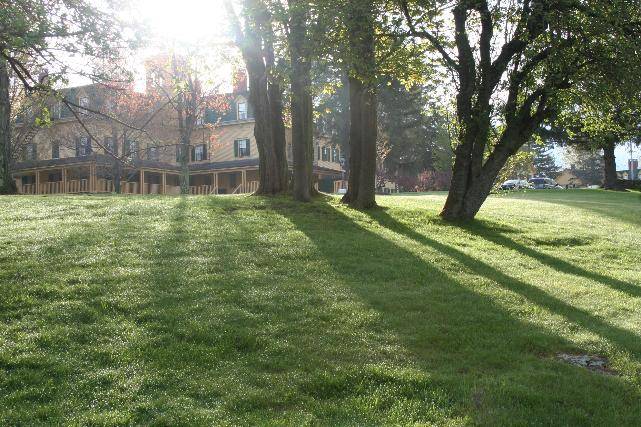
At the writer’s retreat in Vermont, yellow Adirondack chairs look up to the Green Mountains. Robert Frost’s writing cabin is a two-mile walk from the inn. And each morning I walk down through dense woods towards the Middlebury River to sit on a log covered so thick with lichen that it feels like a low, damp chair.
I’m here to work with young writers, and, really how hard could it be in a setting like this? Send them outside. Ask them to open their eyes and sit still. Have them yell out loud in the woods and listen to what replies. Have them think about how all of this got here without them. Ask them what they’ve seen, heard, thought. Give them time to write it down. “No one exists nowhere,” I tell them. “Your writing can become a deep map—a map going down rather than out.”
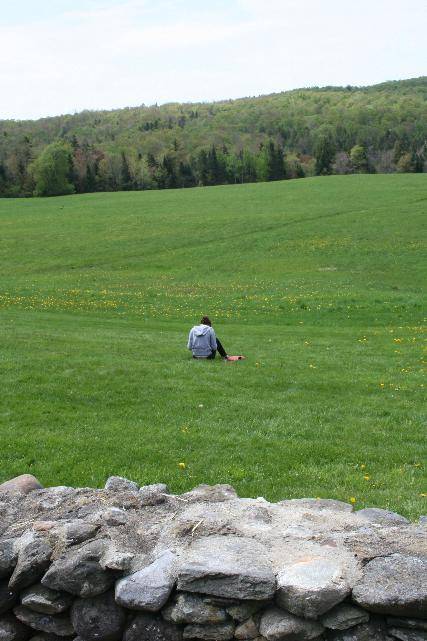 Of course we won’t be here long enough to get much mapping done. We each take three visits to the same spot on the grounds—one in our bodies, all the senses alive; one attending to what or who haunts the place; finally, one asking the questions, “What will remain when I leave?” The answer to that last one, in Vermont in May, is black flies—biting swarming black flies.
Of course we won’t be here long enough to get much mapping done. We each take three visits to the same spot on the grounds—one in our bodies, all the senses alive; one attending to what or who haunts the place; finally, one asking the questions, “What will remain when I leave?” The answer to that last one, in Vermont in May, is black flies—biting swarming black flies.
Back in Illinois a few days later, I can make no sense of my notes and photographs of Vermont. But I feel a trace of desire to be among trees for a few hours. So I head to the woods to walk deliberately. Yet east central Illinois forests do not prosper like beans and corn, so I can’t walk to Walden. I have to start out in my car. I find my way to Kickapoo State Park, 45 minutes or so from C-U, outside of Danville and just a few trails from Indiana.
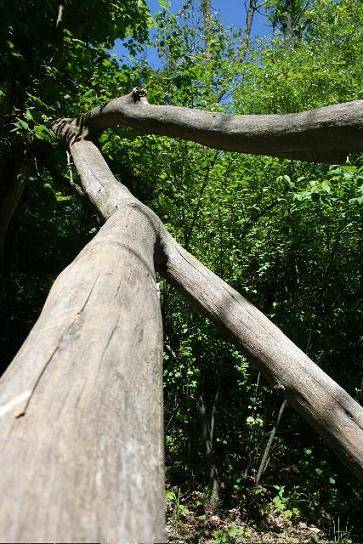 I hike through stands of haw, silver maple, cottonwood, oak, dogwood, sycamore and host of other species I can’t identify without help. Wildflowers and poison ivy dominate the foliage; in Vermont it was mostly moss and ferns. I see almost no wildlife—only a pair of quite large dogs followed by a quite large owner. He is the only person I meet on the trail. All the other souls were in the parking lot, older men in ball caps putting boats into the water.
I hike through stands of haw, silver maple, cottonwood, oak, dogwood, sycamore and host of other species I can’t identify without help. Wildflowers and poison ivy dominate the foliage; in Vermont it was mostly moss and ferns. I see almost no wildlife—only a pair of quite large dogs followed by a quite large owner. He is the only person I meet on the trail. All the other souls were in the parking lot, older men in ball caps putting boats into the water.
On one side of the trail runs the Middle Fork of the Vermillion River, the best name of a river in Illinois, though it is disappointingly caramel in color, not vermillion. On the other side of the trail are several of the 20 or so ponds and lakes in the park, a handful of fishing boats sputtering across them in the late morning sun.
The small hills are easy enough, and the trails are well cleared. I stop every hundred yards or so to photograph downed trees, a toad, views of the river. At one point, trying to take a photo I stumble down a steep, rooted slope towards the river rocks. Even in Illinois, I think, you could fall to your death.
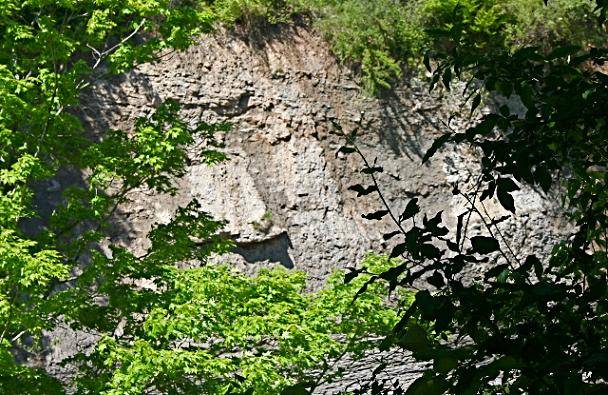 Years earlier, men surely died here. For at least 20 years, United Electric Coal pulled more than 8 million tons of coal from these hills, mostly surface mining. The bluffs along the river bear scars, gouges and erosion made by workers who needed the work and survived (or didn’t) the risks. Of course the Vermillion cut its share of earth away as well, exposing the shale that itself is like a map of coal seams.
Years earlier, men surely died here. For at least 20 years, United Electric Coal pulled more than 8 million tons of coal from these hills, mostly surface mining. The bluffs along the river bear scars, gouges and erosion made by workers who needed the work and survived (or didn’t) the risks. Of course the Vermillion cut its share of earth away as well, exposing the shale that itself is like a map of coal seams.
In 1939, area residents raised funds to help the state of Illinois purchase around 1,200 of these acres from the mining company. With such a legacy, it is nearly unimaginable that in November 2008, Governor Blagojevich threatened to shut down this park as part of proposed budget cuts. As in so many things he tried, I’m happy he failed.
Those who bought the land and the Department of Natural Resources (among many others) both preserved this terrain and gave it a chan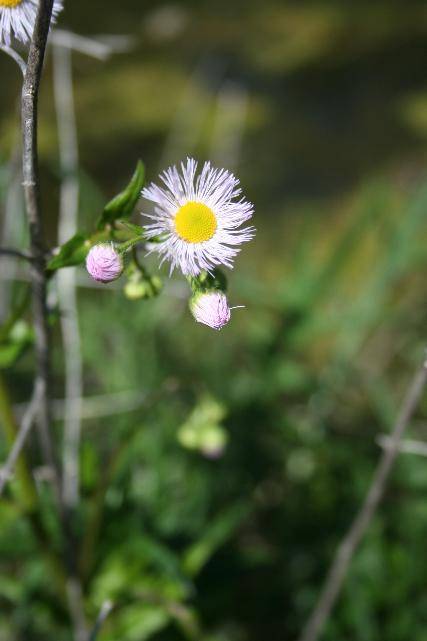 ce to transform. As with so many projects of the Abandoned Mines Lands Restoration Program, Kickapoo Park displays a version of nature reclaiming itself. Birds and fish flourish. Plants root themselves in the soil, rooting the soil itself against more erosion.
ce to transform. As with so many projects of the Abandoned Mines Lands Restoration Program, Kickapoo Park displays a version of nature reclaiming itself. Birds and fish flourish. Plants root themselves in the soil, rooting the soil itself against more erosion.
Yet some of the place’s best features result from the very activities that nearly destroyed it. Wetlands animals and plants thrive in what were once mining pits. It’s impossible to imagine, as I could in Vermont, that this is some untouched wilderness. People have, should, and will continue to be part of this landscape. It’s just a question of how to do it.
I walk back to my car, memory card full of images, and I know at this point how little I know about this place, how long it would take to make a map down deep enough to understand. I also know that neither the Vermillion River, nor Ripton, Vermont exist just to be strip-mined-either for coal or for poetry. I’m trying to be present, but not to leave too many scars.








